The ancient Town of Pembroke dates back to the 11th Century, when the first castle was built. Over the centuries the castle was updated and expanded to become the great structure that can be seen today- the birthplace of Henry Tudor. What more fitting a place is it then to have the War Memorial to the men of the town who lost their lives during both World Wars sited at the entrance to this magnificent fortress. This granite obelisk cenotaph stands on the green by the entrance to the castle, and contains the names of the fallen of the Parishes of St Mary, St Michael and of Monkton. Each relevant Church also houses its own separate memorial, some with slight differences in the names. Many thanks again to Les Nixon for supplying photographs of the War Memorial, and to Mike Berrell for supplying photos of the individual Church Memorials. This page commemorates the men of St. Michael’s Parish who fell during both World Wars.
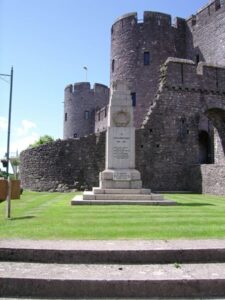
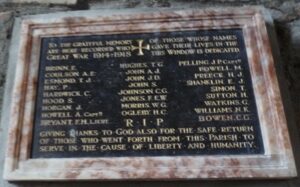
The Great War, 1914-1918
Charles Gordon Bowen, Private, 200080, Welsh Regiment. Charles was born in 1896, the son of George and Fanny Bowen, of 2, Harcourt Terrace, Pembroke. He married Matilda Jane Williams at Pembroke in 1916, and the couple had a daughter, Edith Mary. They set up home at 2, Clifton Villa, Clynderwen. Charles enlisted into the 4th Battalion, Welsh Regiment, on 5 May 1913, and on the outbreak of war was called up to the colours. He fought at Gallipoli with the 1/4th Battalion, Welsh Regiment, which was attached to 159 Brigade, 53rd (Welsh) Division. On 18 September he was admitted to the 1/1st Welsh Field Ambulance, suffering from pain. He was evacuated to England aboard H.S. Northland a week later, and was hospitalised at Pembroke Dock Military Hospital. Charles was then discharged, and was posted to Scoveston Camp, but took ill, and was diagnosed with tuberculosis, which led to him being discharged from the army on 5 November 1917. He died at Clynderwen on 10 March 1919, aged 22, and was buried at Pembroke (St. Michael) Cemetery on 15 March 1919. Charles has only recently (January 2012) been accepted for commemoration by the CWGC after evidence was provided by myself.
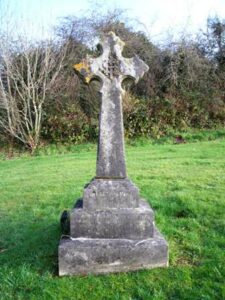
Ernest Brinn, Lance Corporal, 46723, Royal Engineers. Ernest was the son of Robert and Elizabeth Brinn, of 14, Kingsbridge, Pembroke. He worked for the Great Western Railway prior to the war, and was based at Goodwick, where he worked as an engine driver. Ernest joined the Royal Engineers on 7 September 1914, and was posted to the 34th Divisional Signal Company. Ernest was due to move to Gallipoli from 4 July 1915, but was transferred, and posted to France, landing on 10 September 1915, where he was attached to the Army Corps Cable Section in France. He was wounded at Loos, and died of his wounds at No. 25 Field Ambulance on 9 August 1916. Ernest was 25 years old, and is buried at Vermelles British Cemetery, France.
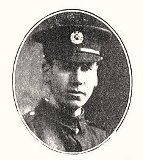
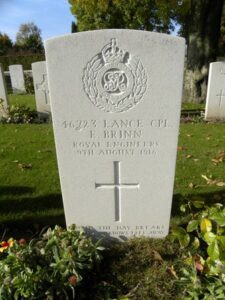
Frederick James Mansell Bryant, Second Lieutenant, Welsh Regiment. Frederick was born at Pembroke in 1895, the only child of William Hugh Owen Mansell Bryant and Lillian Maude Bryant. The family later resided at Manorbier. Frederick was commissioned into the 1/4th Battalion, the Welsh Regiment, part of 159 Brigade, 53rd (Welsh) Division. The Division fought at Gallipoli, suffering heavily, and were transferred to Egypt upon withdrawal from the Peninsula. They defended the Suez Canal, before advancing into Palestine in 1917, and it was on the first day of the Battle of Gaza, on 26 March, 1917, that Frederick was Killed in Action. He is remembered on the Jerusalem Memorial, Panel 30 to 32. Frederick is not named on the Cenotaph, but is commemorated on St. Michael’s Church Memorial.
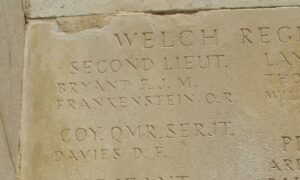
Albert Edward Coulson, Sergeant, 23357, Royal Garrison Artillery. Albert was born in 1887, the son of Ralph and Ada Coulson, of 38, Kent Street, Sculcoates, Hull. He married Alice Gwyther in 1914 prior to enlisting at Hull into the Royal Garrison Artillery, and was posted to Pembroke Dock soon afterwards. On 1 January 1916 the 96th Siege Battery, Royal Garrison Artillery was formed at Pembroke Dock, and Albert became a Sergeant with the Battery. On 24 May 1916 the Battery landed in France, and saw its first action on the Somme, during the attack at Gommecourt. It fought on the Somme throughout the remainder of 1916, before being moved to Arras in 1917, and taking part in the Battle of Arras that year. The Battery then transferred to the Canadian Corps, in the Arras sector. Albert was killed when his gun was hit by German counter-battery fire on 23 July 1917. He was 30 years old, and is buried in Loos British Cemetery, France.
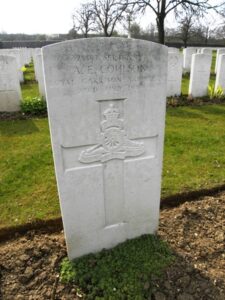
Thomas John Esmond, Rifleman, R/17560, Kings Royal Rifle Corps. Thomas was the son of Thomas and Sarah Ann Esmond, of Orchard Buildings, Pembroke, and enlisted there into the Army, joining the 1st Battalion, King’s Royal Rifle Corps. The battalion formed part of 99 Brigade, 2nd Division, which had moved to France at the outbreak of war. They moved to Belgium, where they fought at the Battle of Mons, and retreating southwards, fought at the Affair of Landrecies, the Rearguard Actions of Villers-Cotterets, and at the Battle of the Marne where the German offensive was stopped. The Germans retreated north, and the BEF met them, fighting at the Battle of the Aisne. The 2nd Division were then moved to Flanders, where they fought at the First Battle of Ypres, when the German sweep through Flanders was stopped, and remained there throughout the first winter of the war. In 1915 they took part in the Battle of Festubert, and in September fought at the Battle of Loos, and subsequent Action of Hohenzollern Redoubt. In the summer of 1916 the Division were on the Somme, and this is where Thomas was killed, on 27 July 1916, aged 25. He is commemorated on the Thiepval Memorial, France.
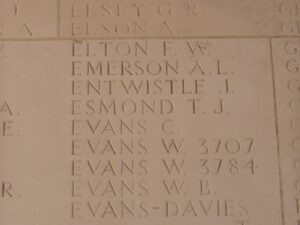
Charles Henry Hardwick, Driver, 39843, Royal Field Artillery. Charles was born at Pembroke in 1885, the son of Alice Hardwick. Alice later resided at Handsworth, Staffordshire, but Charles remained at Pembroke, and married Sarah Jane Lewis, of East End, Pembroke, in 1917. Charles served with the 42nd Brigade, Royal Field Artillery during the war, which was attached to the 12th (Eastern) Division. He survived the war, but died on 1 March 1919 as a result of his war service. He was 35 years old, and was buried at Pembroke (St. Michael’s) Churchyard on 5 March 1919. Charles is not commemorated by the CWGC, and there is insufficient evidence to put him forward for commemoration.
Percy Hay, Private, 54497, Welsh Regiment. Percy was the son of John and Alice Hay, of Belmont Terrace, Pembroke. He enlisted at Pembroke into the Army, and was posted to the 15th Battalion, the Welsh Regiment, which was known as the ‘Carmarthen Pals’. The battalion had been formed from a nucleus of Carmarthenshire men, and in December 1915 had moved to France attached to 114 Brigade, 38th (Welsh) Division. They had been inaugurated into trench life at Fleurbaix for six months before moving to the Somme in June 1916. In July the 38th Division attacked and captured Mametz Wood after 4 days of heavy fighting, before being moved to Ypres, where it remained for the next year. Here it successfully captured the Pilckem Ridge during the opening of the Battle of Passchendaele, and was then moved to the Armentieres sector over the winter of 1917/18. In March 1918 the Germans launched a last ditch offensive on the Somme, and drove the British back towards Amiens. The Welsh Division was rushed to the sector north of Albert where it held the line over the coming months. On 10 May 1918 the 15th Welsh launched a raid into Aveluy Wood, but were hit by a British Artillery bombardment which had mistakenly fallen onto them. Percy was 21 years old when he was killed at Aveluy Wood that day. He is buried at Martinsart British Cemetery, France.
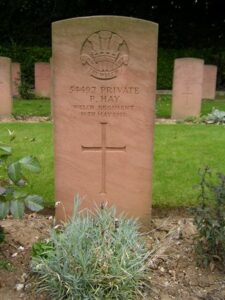
Stanley Hood, Private, 22038, Royal Welsh Fusiliers. Stanley was the son of George and Martha Hood, of Slouthy Mill, Pembroke. He enlisted at Holborn, London into the Army, and was posted to the 15th Battalion, Royal Welsh Fusiliers, part of 113 Brigade, 38th (Welsh) Division. Stanley moved to France with the division in December 1915, and served at Fleurbaix with the division over the coming months. On 5 May 1916 the 15th RWF moved into the front line trenches at Fauqissart, in Northern France, for a brief spell on duty. Stanley was killed in action here on 8 May 1916, aged 24. His grave must have been discovered during post war clearances of the battlefield, as Stanley is today buried at Cabaret-Rouge British Cemetery, Souchez, France, some distance from where he was killed.
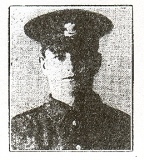
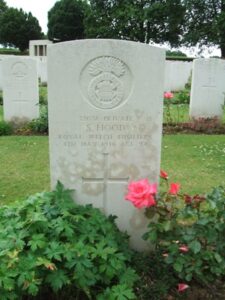
Florance Horgan, Private, 55236, Kings Liverpool Regiment. Florance was born at St. Michael’s, Pembroke in 1875, the son of John and Mary Horgan. The family later resided at Llandyfodwg, and Florance worked as a collier. He enlisted at Swansea into the 3rd Battalion, Welsh Regiment (Militia) on 29 April 1895, and appears to have served with the battalion for several years. After the outbreak of the Great War he re-enlisted Cardiff into the Army, joining the Cheshire Regiment. It is unknown whether he was deemed as unfit for duty at the front, or if he had been wounded, but Florance transferred to the Labour Company of the Kings Liverpool Regiment, which was a Home Service unit. Florance died of sickness at Prescot, Lancashire on 18 April 1917, aged 41. He is buried at St. Helen’s Cemetery, England. Florance is not commemorated at Pembroke, although his brother James, who also fell, is.
James Horgan, Able Seaman, 119500, Royal Navy. James was born at St. Michaels, Pembroke on 25 August 1864, the son of John and Mary Horgan. He enlisted into the Royal Navy on 25 August 1883 and served continuously until completing his service in 1903. He returned to civilian life, after having married Mary Anne Smith at Pembroke in 1900, and the couple lived at Tresco House in the town. James re-joined the Royal Navy following the outbreak of war, and took up a position aboard the reserve Canopus-class battleship, HMS Goliath, which was based with the Pembroke Reserve. Goliath was mobilised into the 8th Battle Squadron and served as a guard ship in Loch Ewe, before escorting the crossing of British troops to Belgium in late August. She then moved in order to take part in operations against German East Africa, before being attached to the fleet which had been despatched to support the Dardanelles Campaign, supporting the landings at Gallipoli on 25 April 1915. On 13 May 1915 Goliath was in Morto Bay off Cape Helles when she was torpedoed by the destroyer Muâvenet-i Millîye and sank with the loss of 570 lives, including James, who was 50 years old. He is commemorated on the Plymouth Naval Memorial, Devon. His brother, Florance Horgan, also fell but is not commemorated at Pembroke.
Arthur Howell, Captain, Royal Naval Reserve. Arthur was born in 1891, the son of James and Mary Ann Howell, of 5, Eaton Place, Pembroke. Arthur’s father and brothers were employed at Pembroke Dockyards, but Arthur decided to go to sea, joining the Merchant Navy several years prior to the war. Arthur served for the duration of the war, and died of influenza in New Zealand on 18 November 1918, aged 27. Little else is presently known of him, as he is not commemorated by the CWGC. Many thanks to Giles Howell for identifying his Great Uncle Arthur, and for the photograph of him.
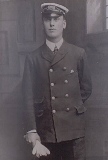
Arthur Charles Howells, Private, 54118, Welsh Regiment. Arthur was born in 1890, the son of Thomas and Jane Howells, of 16, Mansel Street, Pembroke. He enlisted at Pembroke into the 18th Battalion, Welsh Regiment. The battalion was a Bantam Battalion, comprised mostly of men deemed too short for military service, but due to acute shortages of manpower, the Bantams were pressed into service, and the 18th Welsh joined 119 Brigade, 40th (Bantam) Division. Late in 1916 they moved south to the Somme, and fought at the Battle of the Ancre, and remained in the area over the winter. In March, 1917 the Germans withdrew to their shortened line, called the Hindenburg Line, and the 40th Division were one of the Divisions that followed the withdrawal. Later in the year they took part in the Battle of Cambrai, playing an important role in the attack on Bourlon Wood. Arthur was killed here on 23 November 1917, aged 27. He has no known grave, and is commemorated on the Cambrai Memorial, Louverval, France.
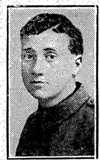
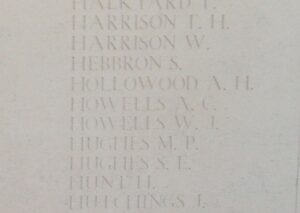
George Hughes, Private, 38001, East Lancashire Regiment. George was the son of John and Mary Hughes, of East End, Pembroke, and the husband of Emma Hughes, of New Cottage, Royal Oak Yard, Pembroke. He enlisted at Pembroke into the Royal Army Service Corps, but later transferred to the 8th Battalion, East Lancashire Regiment, part of 112 Brigade, 37th Division. Late in July, 1915 the Division landed in France and concentrated near St Omer by the 2nd August, 1915. They took part in the Attack on the Gommecourt Salient, during the first phase of the Battle of the Somme. Two of the Division’s infantry Brigades (111 and 112), and the Divisional pioneers were attached to the 34th Division (that had suffered very heavy losses in the attack on La Boiselle in the opening phase of the Somme battle) between the 6th July and the 22nd August 1916. They took part in a number of actions while attached. Upon their return, the 37th Division fought at the Battle of the Ancre. They then moved in March, 1917 and took part in the First Battle of the Scarpe, where they captured Monchy le Preux. They then took part in the Second Battle of the Scarpe, and the Battle of Arleux before moving north to Ypres. Here, they fought throughout Third Ypres, which is where George was killed on 22 September 1917, aged 31. George has no known grave, and is commemorated on the Tyne Cot Memorial, Belgium. His widow Emma re-married, becoming Emma Reader, of Gooses Lane, Pembroke.
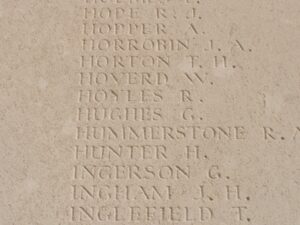
Albert James John, Private, 45482, Lancashire Fusiliers. Bertie was born at Broomhill, Minwear on 20 October 1898, the son of David John and Catherine Ann John (nee Lewis). The family later resided at St. Florence, and Albert was educated at Greenhill Grammar School. At some time during the war the family had moved again, to Amberley House, Pembroke. Albert enlisted at Carmarthen into the Pembroke Yeomanry, and at some time after 1916 was posted to France, joining the 18th Battalion, Lancashire Fusiliers. The battalion was attached to 104 Brigade, 35th Division, and saw its first major action on the Somme. After being drastically re-manned, the Division then went back into the line, and followed the German Retreat to the Hindenburg Line in March 1917. Later in the year they moved north to Ypres, and fought at the Second Battle of Passchendaele. Albert was killed in action at Passchendaele on 22 October 1917, aged 20. He has no known grave, and is commemorated on the Tyne Cot Memorial, Belgium. He had originally been reported as missing two days prior to the official date of his death. His brother Joseph also fell.
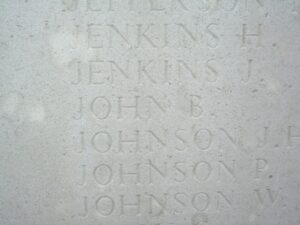
Joseph Davies John, Private, 645, Australian Imperial Force. Joseph was born at Broomhill, Minwear, Narberth in 1893, the son of David and Catherine Ann John. The family later resided at Tenby, where Joseph was educated, and at Amberley House, Pembroke. Joseph had emigrated to Australia with his cousins in 1910, aged only 17, and enlisted at Perth, NSW on 12 March 1915 into the 28th Battalion, Australian Infantry, who were attached to 7 Brigade, 2nd Australian Division. Joseph landed on Gallipoli on 5 September 1915 and was wounded in the thigh two weeks later, which required him to be evacuated and sent to Egypt for treatment. On 15 January 1916 Joseph returned to his unit, and on 16 March 1916 the Battalion embarked at Alexandria to France, disembarking at Marseilles on 21 March. In France, the Australian Imperial Force were posted to the line near Fleurbaix, where they were initiated into the rigours of trench warfare on the Western Front. In mid July, the ANZACS were sent to the Somme, where they were to take the formidable German positions at Pozieres Ridge. The first attack was carried out successfully by the First Division, and on 27 July 1916, the Second Division replaced them at Pozieres. Joseph was posted as missing during the continued fighting at Pozieres, and was finally certified as Killed in Action on 29 July 1916. He was 22 years old, and is remembered on the Villers-Brettoneaux Memorial, France. His brother Albert also fell.
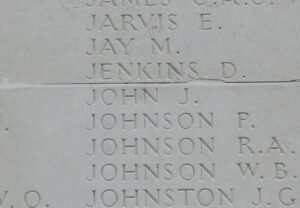
Sidney John, Private, 483, Welsh Regiment. Sidney was born at Pembroke in 1895, the son of Samuel and Margaret John. He resided with his uncle Benjamin Davies at 9, Kingsbridge, Pembroke prior to the war, and enlisted at Pembroke into the 1/4th Battalion, Welsh Regiment, the local Territorial Battalion. The 1/4th Welsh became part of 159 Brigade, 53rd (Welsh) Division. Sidney landed on Gallipoli with the battalion on 9 August 1915, and fought there until being wounded, probably at the beginning of November. Sidney was evacuated to Alexandria for treatment in the large Hospital, but sadly died there on 14 November 1915, aged 20. He is buried at Alexandria (Chatby) Military and War Memorial Cemetery, Egypt.
Cyril Gordon Johnson, Shipwright 1st Class, 344857, Royal Navy. Cyril was born at Milford on 19 April 1886, the son of William Henry and Anne Johnson. The family later resided at Lower Lamphey Road, Pembroke. Cyril was a regular in the Royal Navy, serving aboard the ancient battleship HMS Goliath. She had been hurriedly re-commissioned from Reserve at the outbreak of war, and early in 1915 was in the Mediterranean, supporting the Allied landings on Gallipoli. On 13 May 1915 Goliath was torpedoed by the Turkish Torpedo Boat Muavanet, and capsized and sank. Cyril was killed during the sinking of the ship that day. He was 29 years old and is commemorated on the Plymouth Naval Memorial.
Frank Egerton Wedgewood Jones, Private, M/280337, Royal Army Service Corps. Frank was born in 1888, the son of John and Alice Emily Jones, of 3, Bengal Villas, Pembroke. He had enlisted at Tenby into the Pembroke Yeomanry, but had later been transferred to the Royal Army Service Corps. Frank was serving in Egypt when he became attached to 122 Battery, Royal Field Artillery, but he took ill there, and died on 23 October 1918, aged 29. Frank is buried at Alexandria (Hadra) War Memorial Cemetery, Egypt.
Edward Morris Morgan, Sapper, 563293, Royal Engineers. Edward was born at Pembroke in the summer of 1879, the son of John and Mary Morgan, of Twopenny Hay, Pembroke. Edward was a schoolmaster prior to the war, and had residences at 6, Holyland Road, Pembroke and at 46, Wiverton Road, Sydenham, Kent, where he taught. He served as a Sapper with the Royal Engineers during the Great War. Edward survived the war, but died as a result of his service on 23 March 1921, aged 41. He was buried at Pembroke (St. Michael’s) Churchyard on 28 March 1921. Edward is not named on the St. Michael’s Church Memorial, but is named on the Cenotaph. He is not commemorated by the CWGC.
James Henry Morgan, Driver, 38442, Royal Engineers. James was born in Pembroke, the son of James and Martha Morgan. The family later moved to 3, North Gate, Haverfordwest. James enlisted at Haverfordwest as 24097 Pte, Royal Welsh Fusiliers and later transferred to the Royal Engineers. He was posted to their 127th Field Company, attached to the 22nd Division. The Division crossed to France in early September 1915, with all units being concentrated near Flesselles by the 9th of the month. However it’s stay in France was to be very short, as on 27 October, 1915 the Division, having been moved by train to Marseilles, began to embark for Salonika. It completed concentration there in November, and remained in the theatre for the rest of the war, taking part in the Retreat from Serbia during December, 1915. Between 10 to 18 August 1916 they fought at the battle of Horseshoe Hill, and around this time, James took ill and was hospitalised. He died on 22 August 1916, aged 21, and is buried at Salonika (Lembet Road) Military Cemetery. James is not named on the St. Michael’s Church Memorial, but is named on the Cenotaph.
Walter John Morris, Private, 482, Welsh Regiment. Walter was the son of John and Ellen Morris, of 3, Harcourt Terrace, Pembroke. He enlisted at Pembroke into the 1/4th Battalion, Welsh Regiment, the local Territorial unit, which was attached to 159 Brigade, 53rd (Welsh) Division. Walter took ill before the division was due to move to the Mediterranean, and died on 18 June 1915. He was just 19 years old and is buried at St. Michael’s Cemetery, Pembroke.
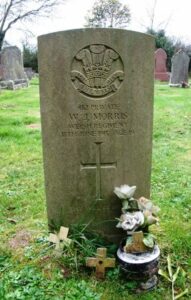
Hubert Stanley Cadogan Ogleby, Engine Room Artificer 4th Class, M/6188, Royal Navy. Hubert was born on 4 December 1890, the son of Henry George Ogleby and Martha Ogleby, of Connaught House, Pembroke. He married Florence Grace Joyce, of Manascin, Llanfrynach, Brecon in 1915. Hubert served in the Royal Navy, and in 1918 was serving aboard HMS Vehement, a destroyer that had been converted for mine-laying duties, and was attached to the 20th Destroyer Fleet. On 1 August 1918, the Fleet sailed from the Humber to lay a minefield at the seaward end of one the German-swept channels through their minefield in the Heligoland Bight. It was almost midnight when Vehement struck a mine which exploded her forward magazine, and blew off the whole forward section of the ship. She was later sunk by gunfire from Telemachus and Vanquisher. Hubert was one of 48 men killed in the explosion. He was 27 years old, and is commemorated on the Plymouth Naval Memorial, Devon and on his parents grave at Pembroke.
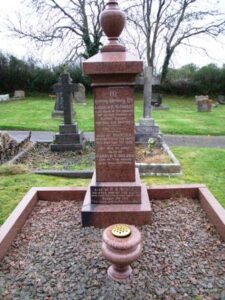
John Plankington Pelling, Captain, Royal Army Service Corps. Very little is known about John, but he was born at Birkenhead in September 1884, the son of Thomas and Jessie Pelling. He was commissioned into the Army Service Corps on 13 March 1915, and survived the war, being mentioned in despatches in 1917. John married Mabel Jane Thompson in the Wirral during March 1919. He died at Pembroke on 17 February 1920, aged 35. John is not commemorated by the CWGC.
David Marsden Powell, Private, 57402, Worcestershire Regiment. David was known by his family as Marsden, and was the son of Reverend Howell and Mary Jane Powell, of The Manse, Pembroke. He had enlisted at Pembroke into the Oxford & Bucks Light Infantry, but had since transferred into the 3rd Battalion, Worcestershire Regiment, attached 74 Brigade, 25th Division. The division had been in France since September 1915. After fighting at Vimy Ridge in 1916 and at Messines in 1917, the Division fought at Pilckem, before moving south again, where they took up positions around Bullecourt in reserve. Here the Division was used to reinforce the badly depleted British units that were hit in the area by the German Spring Offensive of March 1918. They moved north to Flanders on the night of the 30th March, where they took up positions at Ploegsteert again, where they received reinforcements, and rebuilt. However, on 9 April the Germans launched an offensive on the Lys, and the Division was caught up in the terrible fighting here, at the Battles of Estaires, Bailleul, Messines and Kemmel. The Division withdrew to Abeele on 17 April, but on the 25th was ordered back into the line, and took part in the Second Battle of Kemmel. Marsden was killed during the coming fighting, on 26 April 1918. He was 19 years old and is commemorated on the Tyne Cot Memorial, Belgium.
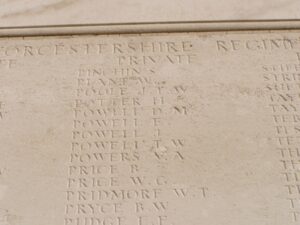
Howard Joseph Preece, Private, 332, Welsh Regiment. Howard was born in 1894, the son of Alfred and Sarah Preece, of 11, Kingsbridge, Pembroke. Little is presently known of him, but he was a member of the 4th Battalion, Welsh Regiment (TA). Howard died of tuberculosis on 28 November 1915, aged 21, and was buried in Pembroke (St. Michael) Cemetery on 1 December 1915. He is not commemorated by the CWGC.
Edward John Shanklin, Private, 9483, Cavalry. Edward was the son of William and Martha Shanklin, of Hodgeston, Pembroke. He had enlisted in 1912 into the Cavalry, and served with the 19th (Queen Alexandra’s Own Royal) Hussars. At some time during the course of the war, Edward was transferred to the Royal Engineers, and was with them when he was wounded during the last few weeks of the war. He was brought to the Hospital at Wimille for treatment, but sadly died there on 19 November 1918 aged 27. Edward is buried at Terlincthun British Cemetery, Wimille, France.
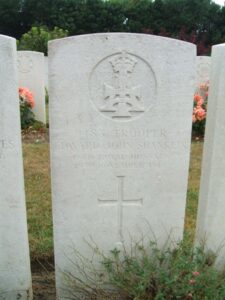
George Watkins, Shipwright 1st Class, 344396, Royal Navy. George was born on 16 September 1882, the son of George William Watkins and Mary Ann Watkins, of Clevedon House, Holyland Road, Pembroke. He was a regular in the Royal Navy, serving aboard HMS Bulwark, a Formidable Class Battleship. On 26 November 1914 Bulwark was moored in the estuary of the River Medway when a powerful internal explosion ripped her apart. All of her officers were lost, and out of her complement of 750, only fourteen sailors survived. The most likely cause of the disaster appears to have been overheating of cordite charges stored alongside a boiler room bulkhead, and this was the explanation accepted by the court of enquiry. George was 32 years old and is commemorated on the Portsmouth Naval Memorial, Hampshire.
Nigel Kenneth Williams, Lance Corporal, 200037, Welsh Regiment. Nigel was the son of Thomas and Sarah Williams, of Main Street, Pembroke. He was another of the local men to enlist into the 1/4th Battalion, Welsh Regiment, part of 159 Brigade, 53rd (Welsh) Division. Nigel had served with the division throughout it ill fated time at Gallipoli, and during their spell in Egypt. In March 1917 the Division marched into Palestine, and fought at the First Battle of Gaza. Nigel was killed soon after, on 19 April 1917. He was 23 years old and is buried at Gaza War Cemetery, Egypt.
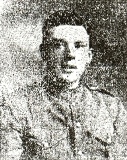
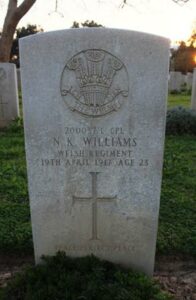
World War Two, 1939-1945
John Stephen Adams, Lieutenant, Royal Naval Volunteer Reserve. John was the son of Colonel John Loftus Adams, and of Hermione Agnes Caroline Adams, of Holyland, near Tenby. He served with the Royal Naval Volunteer Reserve, aboard H.M. Trawler Stella Capella. She was a trawler which had been purchased into the Royal Navy in August 1939 and converted for anti-submarine duties, joining the 12th A/S Strike Force at Belfast. During 1940 she took part in the Norwegian campaign, and in April 1941 joined the 41st A/S Group at Iceland. Stella Capella was on patrol off Iceland on 19 March 1942 when she was torpedoed and sunk by the German submarine U-701, with the loss of all hands. John was 30 years old when he died that day, and is commemorated on the Lowestoft Naval Memorial, Suffolk. John’s parents are buried at Manorbier Churchyard, and John is commemorated on their headstone there.
Wilfred Charles Coles, Warrant Officer Class II (B.S.M.), 754008, Royal Artillery. Wilfred was the son of Celia Mary Coles, of Pembroke, and served with the 102 (The Pembroke Yeomanry) Field Regiment, Royal Artillery. Wilfred died on 6 October 1940, aged 35, and is buried at Pembroke (St. Michael) Cemetery.
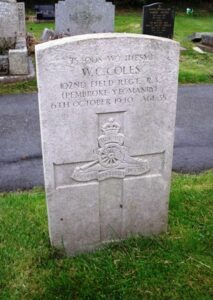
Joseph Craig, Private, 1111315, The East Lancashire Regiment. Joseph was the Husband of Olive May Craig, of Pembroke. He served with the 5th Battalion, East Lancashire Regiment, which landed on the Normandy beaches on 29 June 1944, as part of 59th (Staffordshire) Division. Joseph was killed just over a week after landing in Normandy, on 8 July 1944. He was 29 years old, and is buried at La Delivrande War Cemetery, Douvres, France.
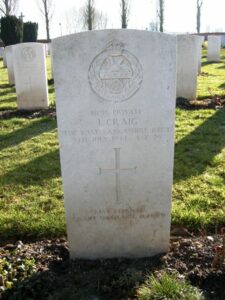
James Ernest Dooley. James was born in 1901, the son of William and Alice Dooley, of East End, Pembroke. He married Gwendoline Scarfe at Pembroke in 1932. Little else is presently known of him, but he died at Pembroke in 1943, aged 41.
Ronald George Hay, Petty Officer Stoker, D/KX 83607, Royal Navy. Ronald was the son of James and Inez Hay, of Pembroke, and the husband of Gwendoline Avesnes Hay, of Milton, Pembrokeshire. He served in the Royal Navy, aboard HMS Jackal, which was a J-Class destroyer. Ronald was seriously wounded when Jackal was bombed and heavily damaged on 11 May 1942, north-west of Mersa Matruh, Egypt, by German Ju88 aircraft. He died the following day, aged 29, and was buried at sea, and so is commemorated on the Plymouth Naval Memorial, Devon.
John Ernest Philip Jeff, Pilot Officer, 88034, Royal Air Force. John was the son of Ernest and Madge Jeff, of Tenby, and served in 44 Squadron, RAF. The Squadron was part of Bomber Command, and flew the Handley Page Hampden. John was part of the crew of Hampden I, Serial AD864 KM-W, which took off on the night of 2 May 1941 bound for Hamburg. John was killed when the bomber was shot down, and crashed on the River Elbe, between Blankenese and Cranz, on 3 May 1941. He was 23 years old, and is commemorated on the Runnymede Memorial, England. His brother Robert also fell.
Robert Voase Jeff, DFC and Bar, Flight Lieutenant, 39285, Royal Air Force. Robert was the son of Ernest and Madge Jeff, Of Tenby, and served with 87 Squadron, RAF. The Squadron was a fighter squadron, equipped at the beginning of the war with the Hawker Hurricane, which it flew during the Battle of France in 1940. Robert gained the award of the Distinguished Flying Medal twice, and the French Croix-de-Guerre, during his prematurely short career with the RAF, in which he shot down several German aircraft. He was killed when his Hurricane was lost in combat over Portland Bill on 11 August 1940. Robert is commemorated on the Runnymede Memorial, Surrey. His brother John also fell. Robert’s Bar to his DFC was awarded after his death; ‘This officer was a first class leader who inspired his flight with the offensive spirit and himself shot down five enemy aircraft.’
George William Morris, Private, 4207496, Pioneer Corps. George was the Husband of Constance Sear Morris, of Milton Regis, Kent. He died on 12 October 1944, aged 34, and is buried at Hadley General Cemetery.
Leonard R. J. Phillips, Private, 14572556, General Service Corps. Leonard was the son of James And Winifred Phillips, of Holyland, Pembroke, and served with the General Service Corps. He died, aged 19, on 4 June 1943, and is buried at Pembroke (St. Michael) Cemetery.
Percy Frederick Charles Seear, Corporal, 1280025, Royal Air Force Volunteer Reserve. Percy was born at Aldershot in 1908, the son of Percy Charles And Harriett Ellen Seear. By 1911 the family had moved to Main Street, Pembroke. In 1933 Percy married Sylvia Rosalind Thomas, and the couple resided at Pembroke. Percy served during the war with the Royal Air Force Volunteer Reserve. He drowned in Freshwater Bay on 6 August 1945, aged 37, and is buried at Pembroke St. Michael Cemetery. Percy is not commemorated at Pembroke.

Ronald Meddick Thomas, Ordinary Seaman, Merchant Navy. Ronald was born at Pembroke on 17 July 1921, the son of Ernest R. Thomas and Edith Thomas (nee Meddick). He served with the Merchant Navy aboard the Ardrossan registered cargo steamer S.S. Baron Kinnaird. On 12 March 1943 Baron Kinnaird was en-route from Loch Ewe to Macoris when she was torpedoed and sunk by the German submarine U-621 with the loss of all hands. Ronald was 21 years old when he died that day and is commemorated on the Tower Hill Memorial, London.